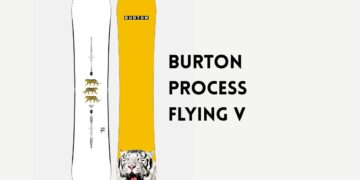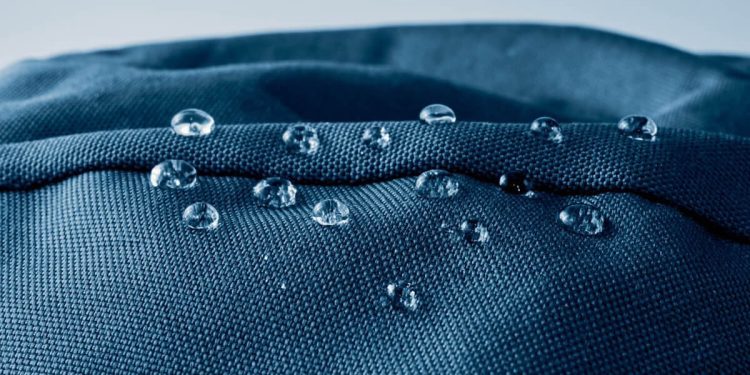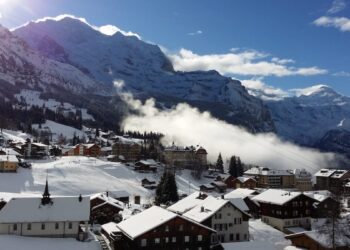Whether you’re hitting the slopes or going on a winter hike, you often hear two terms in winter sports wear: Thinsulate and Gore Tex. They’re either blurred together in thick product descriptions or pronounced with pride by those selling you winter gear. But what do these terms really mean? Do they significantly enhance your winter sports experience?
Understanding Gore Tex and Thinsulate, what they do, and how they compare can help you make an informed decision when buying your winter apparel.
Lets dig in and find out what these two products really are, and whether they’re worth splashing out the extra money on.
Quick note: There are a couple of affiliate links in here, which just means we earn a commission if you click and buy via them – at no extra cost to you.
What is Gore Tex?
Thanks to some very aggressive marketing, Gore Tex has become the most highly reputed brand, synonymous with waterproof and breathable fabrics. It was first introduced in 1976 by W.L. Gore & Associates.
The company patented a new type of fabric that exhibited both waterproof and windproof capabilities while still allowing for vital breathability. However this product was not actually their invention, it is basically Teflon which has been turned into a fabric.
Gore Tex is not merely a fabric – it’s a layered structure. The actual Gore Tex layer is a membrane made from expanded polytetrafluoroethylene (ePTFE), a material known for its unique microporous structure. In addition, a coat of polyurethane is added to increase oil and dirt resistance, enhancing water resistance even further.
Put very simply, Gore Tex is several layers of plastic which are designed stop water coming one way, while allowing vapour to exit the other way.
What is Thinsulate?
Created by the well-known brand, 3M, Thinsulate is a synthetic fibre thermal insulation used in clothing. Its unique feature is that it provides higher insulation value without adding bulk to the apparel, living up to the ‘thin’ part of its name.
Put very simply, Thinsulate is polyester but made to be much thinner and ligther.
Because Thinsulate fibres are much finer than the fibres found in most other synthetic or natural insulation, this allows them to trap more air in less space. By extension, this naturally results in better insulation. It’s commonly found in boots, gloves, hats, jackets, and more.
What Other Types of Waterproofing and Insulation Are On Ski Wear?
Waterproofing and insulation are indispensable for a comfortable ski experience. Apart from Gore Tex and Thinsulate, you might find materials like eVent, DryQ, and NeoShell, which are great for waterproofing due to their breathable membranes.
For insulation, synthetic materials like PrimaLoft and Polartec Alpha are commonly used. They maintain significant insulative properties even when wet, making them advantageous in damp and cold conditions.
Are There Any Natural Materials That Are Waterproof and Breathable?
When it comes to natural fibres, one of the best is wool. Wool is a naturally insulating fibre that is both moisture wicking and breathable. However, you’re unlikely to find a ski jacket made from wool for a number of reasons. Wool can hold a lot of water so can get heavy, and it can also shrink if handled incorrectly.
Merino wool is probably one of the best materials for thermal layers, precisely because of it’s natural heat insulation and moisture wicking properties.
In addition, there’s traditional down insulation, prized for its high warmth-to-weight ratio and compressibility. While some ski wear does feature down, it’s not the most practical material as it can be very bulk, and again, if it gets wet there can be issues with water retention.
Is Gore Tex Really Waterproof?
Yes, Gore Tex is indeed waterproof. It’s also breathable and windproof, which is the main selling point. The ePTFE membrane in Gore Tex contains over 9 billion pores per square inch. These pores are 20,000 times tinier than a water droplet, prohibiting it from penetrating the membrane.
Despite this, the pores are also 700 times larger than a moisture vapor molecule, allowing sweat in the form of water vapor to pass through, leading to better breathability. Theoretically, while Gore Tex will keep the snow and rain out, it should also let the moisture from your body escape, keeping you dry and comfortable on your winter exploits.
And while this is true, the effectiveness of Gore Tex can decrease if the outer membrane gets wet. Basically, if the exterior is wet, it can be hard for the vapour from your body to escape, so you end up retaining that moisture within the garment.
Does Thinsulate Really Keep You Warm?
Indeed, Thinsulate’s primary function is to provide warmth, and it does that exceptionally well. Thanks to the very fine fibres, Thinsulate can provide a high amount of insulation without adding excessive bulk to the garment.
Thinsulate insulation works by trapping air molecules between you and the outside. The more air a material traps in a given space, the better it insulates you from the cold outside air. This makes Thinsulate an excellent tool for keeping warm in cold conditions.
However, Thinsulate is not a waterproof material, so is often used as a component within the lining of clothing.
Are Gore Tex and Thinsulate Sustainable or Eco-Friendly?
Short answer: no. Both Gore Tex and Thinsulate are petrochemical based materials, created using energy intensive processes. As they are also made from petroleum extracted materials, they are not biodegradable and are also very hard (if not impossible) to recycle.
Are There Alternatives to Gore Tex or Thinsulate?
Gore Tex and Thinsulate both offer excellent attributes, but they are certainly not your only options.
Patagonia use their own waterproof and breathable technology, called H2No. This is meant to be a petrochemical free alternative to Gore Tex and other waterproofing technology, but there is no specific material that can be classified as H2No. It’s simply a process where Patagonia try to improve the waterproofing and breathability of their clothes without using chemicals.
Some snow wear brands such as Picture Organic also use a newer version of Teflon coating, called EcoLite. While this is marketed as a more sustainable product, with apparently 60% of the materials sourced from renewable sources, it is still partly made from petrochemical products. However, it is a move in the right direction.
Can I Make Any Ski Jacket Waterproof?
While most ski and snowboard jackets, are waterproof, and most outdoor jackets by extension, you can also add your own waterproofing to any jacket. This usually means buying a waterproofing spray such as Scotchguard and following the instructions to add that waterproof layer.
Another option, Nikwax, is designed to improve the liftspan of waterproof items. This is usually added in the wash and can be used to add or enhance the waterproof qualities of your clothes.
However if you’re thinking this is an eco-friendly option, you might be disappointed. Most waterproofing sprays contain PFAs, or per-and polyfluoroalkyl substances. These are basically petrochemicals, so you’re adding a layer of plastic – which is basically what Gore Tex is anyway.
In fact, if you do have Gore Tex, its often a good idea to add a layer of waterproofing such as Nikwax after a year or two of use.
In Summary
Your choice between Gore Tex and Thinsulate or any other alternatives depends on your specific needs and preferences. Both Gore Tex and Thinsulate have their benefits in terms of waterproofing and insulation respectively. But what one brand has cornered the market in terms of one feature, another brand might make up for in other features.
Therefore, the conversation around “Gore Tex vs Thinsulate” isn’t about one being inherently better than the other. Instead, it’s about understanding how they work, what they’re best at, and how that suits your individual requirements for your winter sports adventures.














